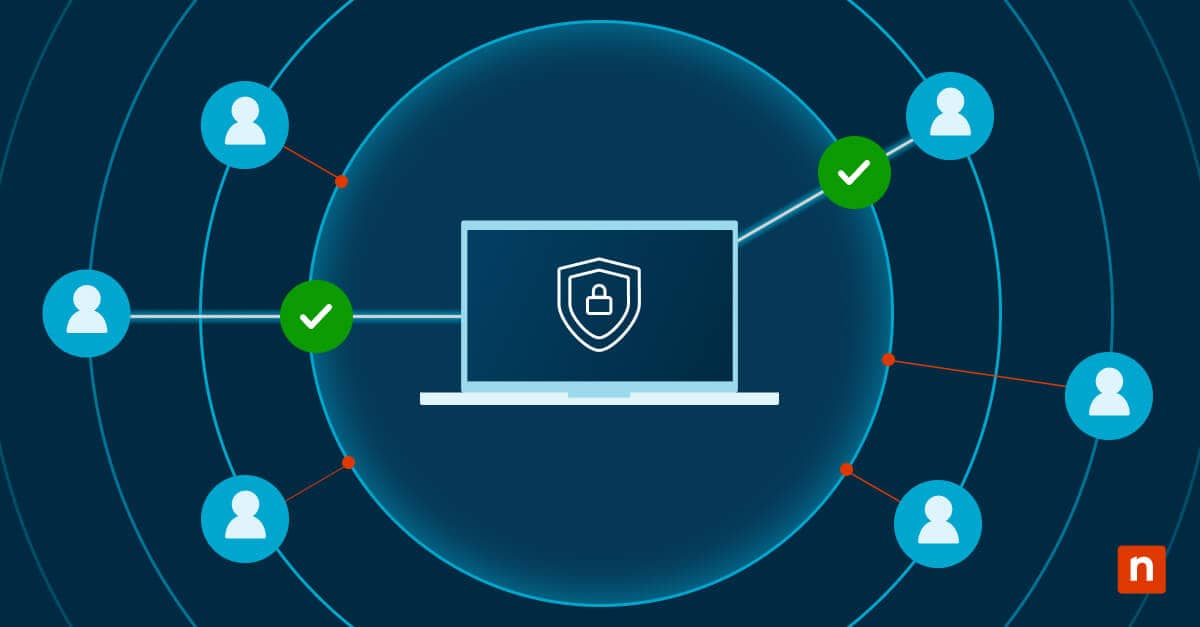When Windows 10 users need technical help, they immediately look for the contact information of their IT administrators. A great way to make this easier is learning how to add support contact information to Windows Security, so users know exactly where to look. You can do this using tools built into Windows, like the local Group Policy Editor or the Registry Editor. This guide shows you how, step by step, depending on the edition of Windows 10 you are using.
Requirements
Before proceeding, you should know what the following instructions will require of you.
- Administrator rights: To modify the right policies and registry entries, you must log in as an administrator.
- Group Policy Editor method: Method 1 is only available for Windows 10 Pro, Enterprise, or Education users with version 1709 or later.
- Registry Editor method: Method 2 works for all Windows 10 editions, so this is the only viable approach for Windows 10 Home edition users.
Method 1: Local Group Policy Editor (for Windows 10 Pro, Enterprise, and Education Users)
Step 1: Open Local Group Policy Editor.
- Press Windows key + R to open Run.
- Type gpedit.msc and press Ctrl + Shift + Enter.
- Confirm the User Account Control (UAC) prompt to grant yourself administrator privileges.
Step 2: Navigate to the correct policy location.
On the left pane, follow this path:
Computer Configuration > Administrative Templates > Windows Components > Windows Security > Enterprise Customization
Step 3: Enable the “Configure customized contact information” policy.
You must first enable the right policy to input the support contact information.
- Find and double-click Configure customized contact information on the right pane of Enterprise Customization.
- In the new dialog box, select Enabled, tap Apply, then OK.
Step 4: Configure the “Specify contact company name” policy.
Specifying the company’s name is required to make the contact card appear.
- Find and double-click Specify contact company name on the right pane of Enterprise Customization.
- In the new dialog box, select Enabled.
- Under Options, type the name of your company.
- Click Apply, and tap OK.
Step 5: Specify the appropriate information to show in the contact card.
You must also configure at least one of the following policies in the right pane of Enterprise Customizations to make the contact card available:
| Policy: | Contact method: | Sample support information: |
| Specify contact email address or Email ID | Support email address | [email protected] |
| Specify contact phone number | Phone number | +1-800-123-4567 |
| Specify contact website | Website link | https://www.companyname.com |
For every policy that you want to enable, perform these steps:
- Double-click the policy.
- Click Enabled.
- In the Options section, type the appropriate support information for the policy you are modifying.
- Click Apply, and select OK.
Method 2: Registry Editor (for all Windows 10 editions)
⚠️ Before you make changes, always back up the registry so you can restore a working version if you make mistakes that can lead to serious system issues.
Step 1: Open the Registry Editor.
- Press Windows + R to open the Run dialog.
- Type regedit, then press Ctrl + Shift + Enter.
- Click Yes if prompted by UAC to gain administrator access.
Step 2: Navigate to the correct key.
On the left pane, follow this path:
HKEY_LOCAL_MACHINE\SOFTWARE\Microsoft\Windows Defender Security Center\Enterprise Customization
Note: If the Enterprise Customization key doesn’t exist, you need to create it. On the left pane, right-click on Windows Defender Security Center, hover over New, and select Key. Name it Enterprise Customization and hit Enter.
Step 3: Enable the EnableInApp DWORD.
On the right pane of the Enterprise Customization key, double-click EnableInApp (REG_DWORD) and set its value to 1, then tap OK. This enables the contact card and allows you to input support information.
Note: If the EnableInApp DWORD doesn’t exist, you need to create it. On the right pane of Enterprise Customization, right-click on a blank area, hover over New, and select DWORD (32-bit) Value. Name it EnableInApp and hit Enter.
Step 4: Specify the company name.
You must specify a company name to make the contact card visible.
- On the right pane of the Enterprise Customization key, double-click CompanyName (REG_SZ).
- In the Value data field, type the name of your company or organization.
- Click OK.
Note: If the CompanyName string value doesn’t exist, you need to create it. On the right pane of Enterprise Customization, right-click on a blank area, hover over New, and select String Value. Name it CompanyName and hit Enter.
Step 5: Specify your desired contact method.
Aside from the company name, you must specify at least one contact method to make the contact card available.
| Contact method: | Registry value: | Sample entry: |
| Support email address | [email protected] | |
| Phone number | Phone | +1-800-123-4567 |
| Website link | URL | https://www.companyname.com |
For every contact method you want to show, perform these steps:
- Double-click your chosen contact method’s registry value (Email, Phone, or URL).
- Type the appropriate support information in the Edit String dialog box under the Value data field.
- Click OK, exit the Registry Editor, and restart your device to apply the changes.
Note: If the string value of your desired contact method doesn’t exist, you need to create it. On the right pane of Enterprise Customization, right-click on a blank area, hover over New, and select String Value. Name it Email, Phone, or URL, as appropriate, and hit Enter.
Verifying the changes
Check if your Group Policy or registry modifications did what they’re supposed to do.
- Open Settings and select Update & Security.
- On the left pane, click Windows Security.
- On the right pane, tap Open Windows Security.
- Click the support button with your company name in the bottom-right corner. You should see the support contact information you specified.
How to remove or change support information
If your contact details have changed or the contact card is no longer needed, follow these steps to update or remove it.
If you used the Group Policy Editor
- To remove it: Set the policies for support contact information to Not Configured.
- To edit it: Change the policy values.
If you used the Registry Editor
- To remove it: Delete the Email, Phone, and URL string values.
- To edit it: Change the value of your registry entries.
What is the support information contact card in Windows Security?
Support contact information in Windows Security appears as a customizable button that helps users reach the right tech people whenever something goes wrong. This contact card in Windows 10 is visible to all users and contains the company name and a specific technical support email address, phone number, and/or link. Additionally, the contact information specified here may appear in notifications, such as Windows Defender contact support popups or “Block at first sight” warnings.
Why customize this information?
Customizing this message offers many benefits, especially in organizational environments like corporate workplaces, educational institutions, and government agencies.
- Streamlined support access: With readily available contact information, users won’t get confused when searching for technical help.
- More efficient IT and helpdesk operations: Concerned teams can direct user concerns to a specific email, phone number, or webpage, helping them track issues and prioritize requests.
- Minimizes downtime: Users can take action quickly when encountering tech problems, leading to faster resolutions and reduced outages and unreported issues.
Frequently Asked Questions (FAQs)
Can I include clickable links in the contact card?
The contact information you specified is immediately clickable when viewed in Windows Security. When clicked, Windows will open the link in your default browser or ask you to choose a program to make the call or email.
Will this affect all user accounts?
Yes, the changes apply system-wide, and all users will see the contact card when they access the Windows Security app.
Can I deploy this in bulk?
Yes, you can via Group Policy Objects (GPOs) in enterprise environments or using scripts for registry edits in smaller environments.
Which methods should I use?
If you’re using Windows 10 Pro, Enterprise, or Education editions, the Group Policy Editor (Method 1) is best. If you’re using Home Edition, you can only use the Registry Editor (Method 2).
Troubleshooting
Changes not appearing
First, close and reopen Windows Security to reflect the changes in the app. If you used the Group Policy Editor (Method 1), ensure the right policies are set to Enabled. If you used the Registry Editor (Method 2), check for typos in the registry keys and values that can prevent the contact card from appearing.
Registry key missing
Some registry keys don’t exist by default in the Registry Editor. You’ll have to manually create the missing keys and string values mentioned to add support contact information.
Takeaways for adding support contact information to Windows Security in Windows 10
The Windows Security app can display support contact information, including contact numbers, email addresses, and website URLs, to help users get the appropriate IT assistance and streamline the technical support process. For Windows 10 Pro, Enterprise, and Education users, the Group Policy Editor provides a convenient way to make the information available for managed devices. On the other hand, Home edition users can modify the registry. This contact card is relatively easy to customize and can be removed later if needed.







